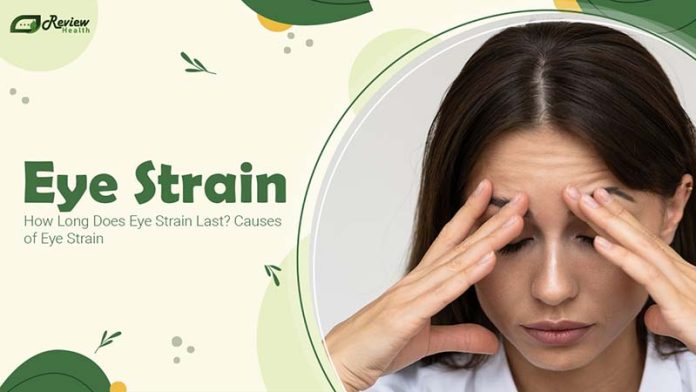“How long does eye strain last?” is a question many people ask after experiencing tiredness, strain, or discomfort in their eyes from prolonged computer use or reading in low light. Typically, eye strain is temporary and eases within a few hours. However, without proper care, symptoms can linger for several days. Visiting an optometrist is advisable to pinpoint the cause of your eye strain and to explore effective remedies. For further information and guidance on managing eye strain, visit Review Health for more updates
Understanding Eye Strain: A Comprehensive Overview
Eyestrain is a frequent occurrence when your eyes become tired due to prolonged use, like driving long distances or spending extended periods staring at computer screens and other digital devices.
While eyestrain can be bothersome, it’s typically not a cause for concern, and it typically dissipates with rest or by taking measures to alleviate eye discomfort. However, in certain instances, symptoms of eyestrain may point to an underlying eye issue that requires medical attention.
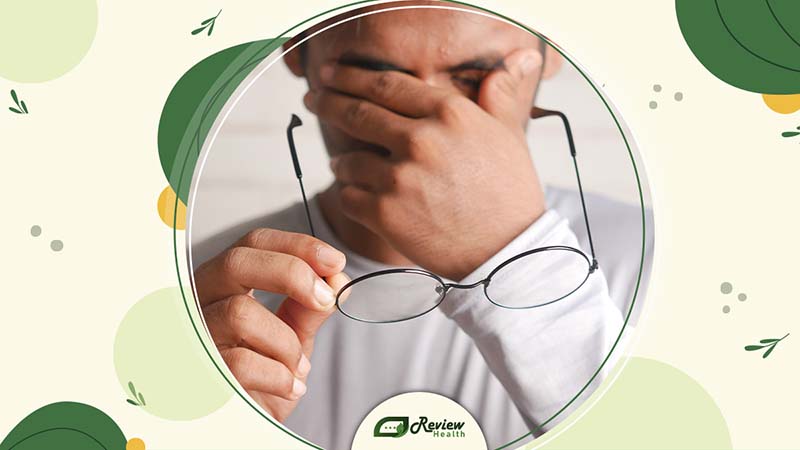
Key Factors That Lead to Eye Strain
“When we focus on something up close, like a computer screen or a cellphone, the lens of the eye naturally tightens,”
explains Dr. Esen K. Akpek, an ophthalmologist at the Wilmer Eye Institute.
This tightening of the lens can lead to eye fatigue, especially when looking at screens for extended periods. Additionally, prolonged screen time often results in decreased blinking. Blinking is essential for redistributing and replenishing the tear layer that keeps the eye’s surface smooth and maintains clear vision.
Without frequent blinking, the eye’s surface becomes more exposed to air and prone to evaporation. This can cause holes in the tear film and irregularities on the corneal surface, leading to blurred vision and perpetuating the problem of eye strain.
Recognizing the Signs: Symptoms of Eye Strain
Symptoms of eye strain are not limited to your eyes; they can also affect other parts of your body. Understanding these symptoms can help in identifying and addressing eye strain promptly.
Symptoms affecting your eyes include:
- Watery Eyes: Excessive tearing can occur as your eyes try to combat dryness, a common sign of eye strain.
- Dry Eyes: This contradictory condition to watery eyes represents a lack of adequate moisture, leading to irritation and redness.
- Blurred Vision: Difficulty in focusing, which can make daily tasks such as reading or working at a computer challenging.
- Sensitivity to Light: Increased discomfort in bright environments or when looking at screens, making it hard to face bright lights without squinting.
- Burning Eyes: A sensation of heat or irritation in the eyes, often accompanied by an overwhelming urge to rub them.
- Itching Eyes: An irritating sensation that leads to the desire to scratch your eyes, often worsening the irritation.
- Difficulty Keeping Your Eyes Open: A feeling of heaviness in the eyelids, making it tough to keep your eyes open, which can be particularly problematic during activities that require visual precision.
These symptoms, if left unchecked, can lead to greater discomfort and might affect your productivity and quality of life. Regular breaks, proper lighting, and appropriate eyewear can help mitigate these symptoms.
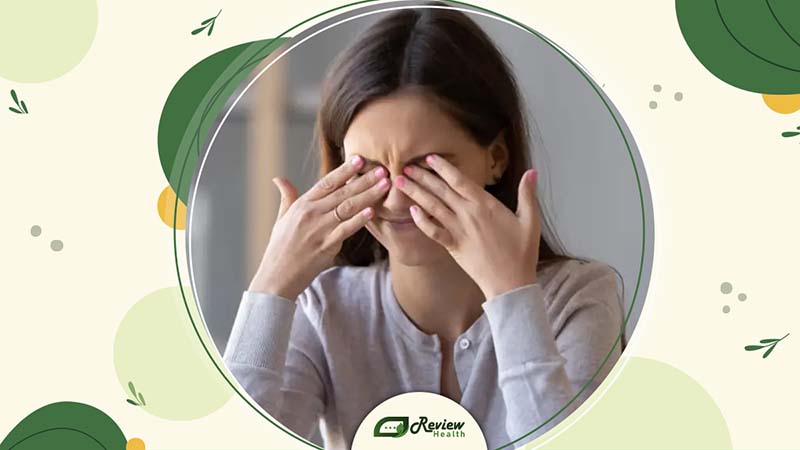
Symptoms affecting your eyes include:
- Watery Eyes: Your eyes may produce excess tears as a response to dryness or irritation, a common reflex to keep the eyes lubricated.
- Dry Eyes: A sensation of dryness often results from prolonged screen use or exposure to dry, windy conditions. This can make your eyes feel scratchy and uncomfortable.
- Blurred Vision: A loss of focus clarity can occur after extended periods of eye use, such as reading or staring at digital screens, making details harder to distinguish.
- Sensitivity to Light: You may find yourself more sensitive to light, experiencing pain or discomfort in brightly lit environments or while using devices with screens.
- Burning Eyes: A burning sensation may develop in your eyes, feeling as though they are tired or strained, often prompting the need to rub them.
- Itching Eyes: Itching is another sign of eye strain that can lead to further irritation or even infection if the eyes are rubbed excessively.
- Difficulty Keeping Your Eyes Open: Feeling like your eyelids are heavy and struggling to keep them open can be a significant indication of eye fatigue.
Recognizing and understanding these symptoms is crucial for taking preventative measures to avoid prolonged discomfort. Implementing regular breaks, adjusting lighting, and using proper eyewear are some strategies to help manage and prevent eye strain effectively.
Find out more: Can Stress Cause Eye Problems? Here’s What You Need to Know & How to Protect Your Vision
Duration of Eye Strain: What to Expect
There isn’t an abundance of comprehensive studies on the exact duration of eye strain. However, according to the American Optometric Association, the duration of your discomfort may vary based on several factors.
These factors include the amount of time you spend looking at screens, whether you have nearsightedness, and whether you have astigmatism. Additionally, if you have an untreated vision condition, it can exacerbate your symptoms of eye strain.
Exploring the Link Between Eye Diseases and Eye Strain
Eye strain and eye diseases are both significant concerns regarding eye health, but they involve quite different aspects of vision and overall health.
Indirect Link: Regular and excessive eye strain doesn’t directly cause major eye diseases, which are often associated with aging, genetics, and other health factors such as diabetes and hypertension. However, chronic eye strain can worsen existing eye conditions or contribute to discomfort in individuals already affected by eye diseases.
Symptom Overlap: Some symptoms of eye strain, such as blurred vision and headaches, can also indicate more serious eye conditions. This overlap can sometimes lead to delayed diagnosis of eye diseases, as individuals might attribute symptoms to eye strain instead of seeking medical evaluation.
Management and Prevention: Effective management of eye strain through adopting good screen habits, ensuring proper lighting, and taking regular breaks can enhance overall eye comfort and promote eye health. For individuals with eye diseases, managing eye strain is an integral part of the broader strategy to maintain optimal vision health.
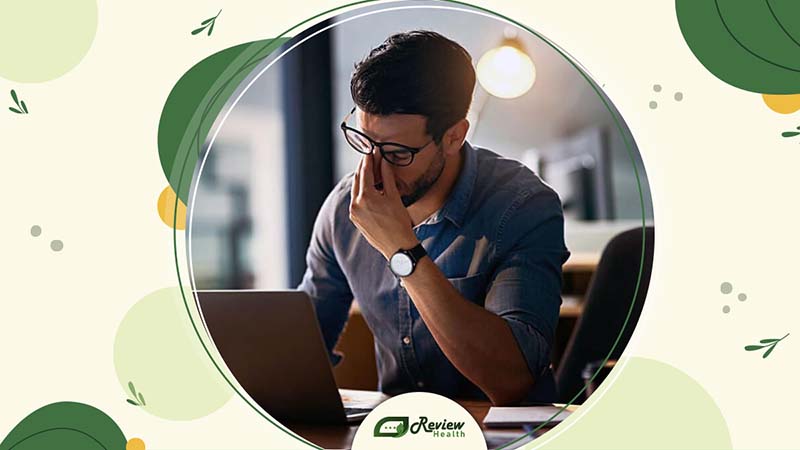
Effective Strategies to Avoid Eye Strain
Consider these tips to reduce or prevent eyestrain:
- Stay Hydrated: Drink plenty of water throughout the day to maintain moisture levels in your eyes, reducing dryness and discomfort associated with prolonged screen use. Staying hydrated supports overall eye health and well-being.
- Take Breaks: When reading or engaging in close work, take occasional breaks and rest your eyes by looking away from the page, digital screen, or task.
- Limit Screen Time: Especially important for children, who may not recognize the connection between extended screen viewing, eyestrain, and the need for regular eye rest.
- Use Artificial Tears: Nonprescription artificial tears can help prevent and relieve dry eyes. Use them regularly to keep your eyes well lubricated and prevent symptoms from recurring. Avoid eye drops with redness removers, as these may exacerbate dry eye symptoms.
- Improve Air Quality: Enhance the air quality of your environment by using a humidifier, adjusting the thermostat to reduce blowing air, and avoiding smoke. If you smoke, consider quitting. Adjusting your seating position can also help reduce exposure to dry moving air on your eyes and face.
- Choose the Right Eyewear: If you require glasses or contacts and work extensively with computers, consider investing in eyewear specifically designed for computer work. Consult your optometrist about lens coatings and tints that may offer additional benefits.
Proven Tips For Long-term Relief From Eye Strain
Effective long-term strategies for reducing eye strain involve a combination of lifestyle adjustments and proactive measures to protect eye health. Here are some key strategies based on provided sources:
- Regular Eye Exams: Ensure your eyes are healthy and that you have the correct vision prescription by scheduling regular eye exams. Discuss with your eye doctor how to minimize eye strain at work and reduce screen time.
- Proper Lighting: Use appropriate lighting to reduce eye strain. Adjust the brightness of your monitor and workspace lighting to optimal levels. Avoid harsh lighting that causes glare on your screen and consider using an anti-glare monitor screen or lenses with an anti-reflective coating if you wear glasses.
- Follow the 20-20-20 Rule: Give your eyes regular breaks by adhering to the 20-20-20 rule. Every 20 minutes, take a 20-second break to focus on something approximately 20 feet away. This helps alleviate eye fatigue and strain from prolonged screen time.
- Maintain a Clean Screen: Keep your device screen free of smudges and fingerprints to reduce glare and enhance clarity. Consider using blue-light-blocking screen protectors to minimize exposure to blue light, particularly from digital devices.
- Set Screens at Proper Distances: Position your screen at a comfortable distance, slightly below eye level, and 20 to 28 inches away from your eyes. Avoid straining your neck or eyes by ensuring proper screen placement and adjusting reference materials accordingly.
- Create a Well-Lit Workspace: Ensure your workspace is well-lit with balanced lighting to prevent shadows or glare on your screen. Use window shades and blinds to control sunlight and maintain a dim, evenly lit environment to reduce eye strain.
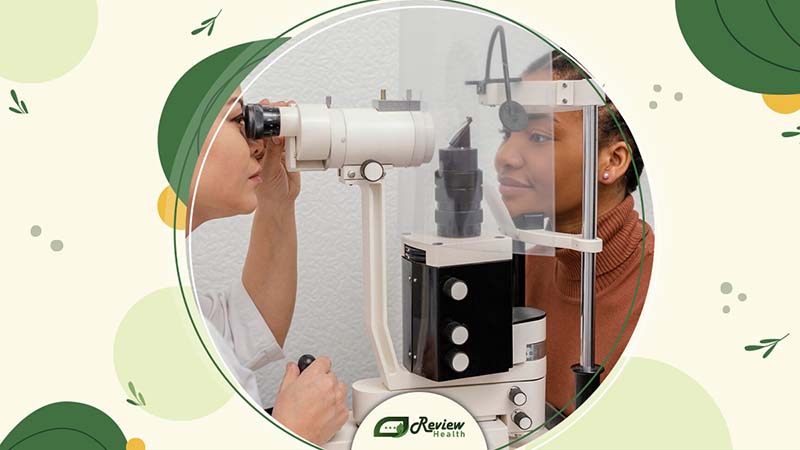
The Sensations Associated with Eye Strain
Patients experiencing eye strain may have varied feelings and reactions. These include:
- Dry eyes
- Headaches
- Blurred vision
- Double vision
- Sensitivity to light
- Sore neck, shoulders, or back due to muscle tension
- Feeling of eye fatigue or heaviness
Some individuals may describe eye strain as tired or watery eyes, while others may mention facial muscle fatigue from squinting or headaches attributed to eye strain.
What If My Eye Strain Did Not Go Away?
If your eye strain persists despite taking precautions, resting, or even limiting exposure to digital devices, seek medical attention. When symptoms persist or worsen over time, there may be underlying conditions affecting your eye health.
The Importance of Regular Eye Exams for Preventing Strain
Regular eye exams are crucial for maintaining eye health, particularly in light of the significant role screen time plays in our daily lives. Eye care professionals conduct these assessments, allowing for early detection of potential damage or issues induced by screen use, such as digital eye strain and dry eye syndrome.
In addition to assessing vision, these comprehensive exams can also detect early signs of other eye health conditions like glaucoma, cataracts, or age-related macular degeneration, which may be exacerbated by excessive screen use. Regular eye exams thus play a vital role in preventing and addressing eye strain and other potential eye health concerns.
Conclusion
In conclusion, eye strain typically leads to temporary discomfort, including symptoms such as pain and burning sensations. A common question people ask is, “How long does eye strain last?” Generally, these symptoms don’t last long, and taking breaks from screen use can often alleviate discomfort within about an hour.
If you notice that your eye strain persists and isn’t just due to screen exposure, it may indicate other underlying conditions. If frequent eye strain is affecting your day-to-day activities, it’s advisable to seek guidance from an eye doctor. For more detailed information on how to manage eye strain and maintain healthy vision, please visit Review Health for a wealth of useful health information.

